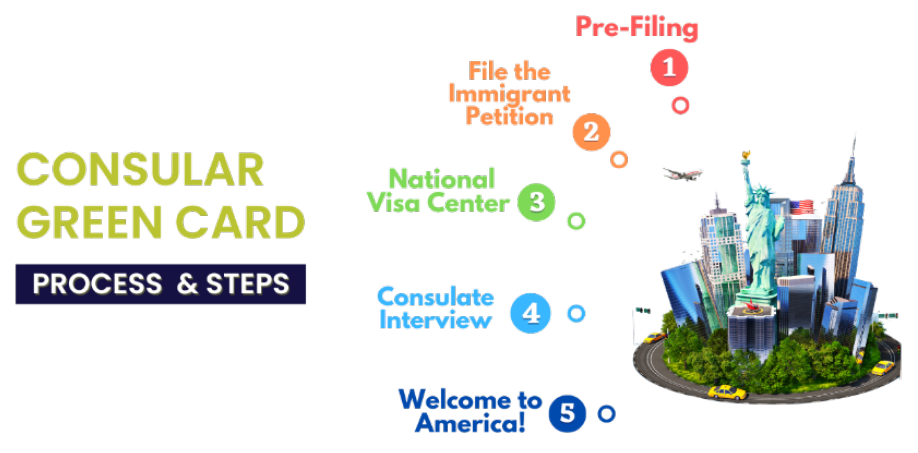The EB-3 Visa and the Journey to a Green Card
Let us take a detailed look at the EB-3 Consular Green Card process and why it is important to continue or begin your visa application process, even if your country is under retrogression. There are five steps in the EB-3 Green Card process that need to be completed before you receive your Green Card. Here is an overview of the process for international nurses looking to work in the U.S.:

The retrogression delay occurs at Step 4: The Consulate Visa Interview at the U.S. Embassy. You can still begin and/or complete steps 1, 2 and 3. Currently, after step 1 is completed, nurse visa applications will continue to process through steps 2 and 3.
The applications will remain at the National Visa Center as “Documentarily Complete” until you are visa-eligible, at which time a Consulate Visa Interview at a U.S. embassy can be scheduled.
Get in the EB-3 Immigration Queue as Soon as Possible!
Obtaining a Green Card is like going to a movie theater. You can purchase a ticket and stand in the queue outside, even if the doors to the theater are not open yet. Your place in the queue affects how soon you enter the theater when they open the doors. Similarly, even if the Department of State is not currently scheduling Visa Interview appointments for those who are not visa-eligible, O'Grady Peyton International and their partnering healthcare facilities can still begin the visa application process and help you get in the queue to be scheduled for an interview. Apply now to begin the process.
Apply Today!




